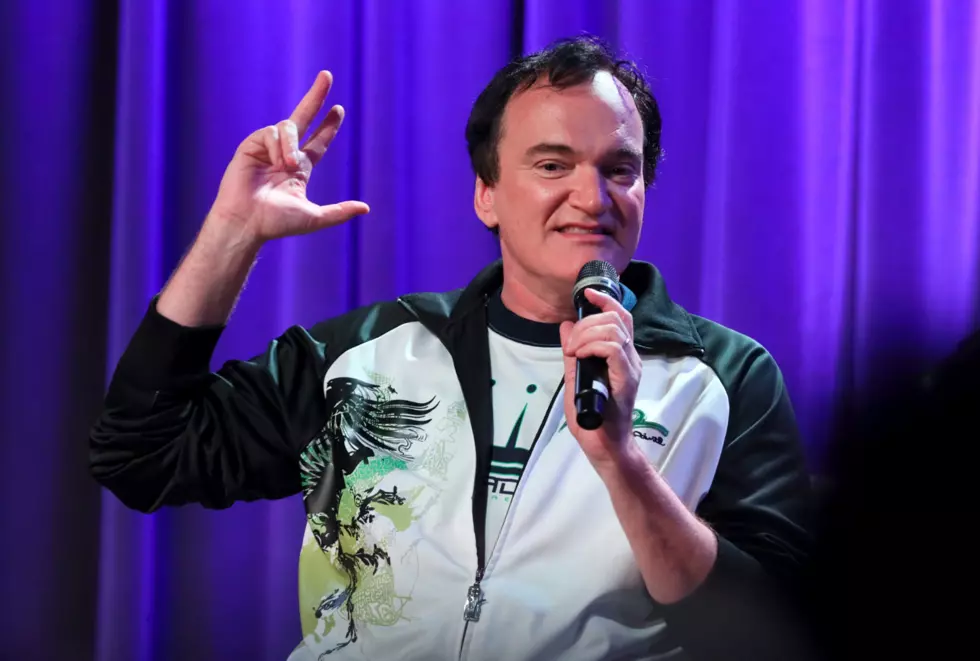
To Boldly Go: A Comics History of Star Trek
It's Star Trek's 50th anniversary and between the well-received Star Trek Beyond, the fact that all of Trek is available streaming basically everywhere, a new TV show coming next year, and the continued release of new novels and comics, it's a good time to be a fan of the USS Enterprise and its brethren.
Comics have been a part of Trek lore from almost the very start. Beginning in 1967, when the original Trek was wrapping up its first season on NBC, Gold Key published a series that only had two consistent features: an irregular publishing schedule, and an almost total disregard for how the characters actually looked.
Given the long lead time of comics and the sporadic publishing schedule, the first issues by writer Dick Wood and artist Nevio Zeccarra worked from early publicity photos and the barest descriptions of the series provided by Paramount, as the show itself hadn't premiered yet.
As a result, the series reads like a bizarro Trek --- most characters wear green uniforms, Spock's ears are insanely long, "Starfleet" and "starship" are separated into two words each, the Enterprise bridge looks very different, and the iconic transporter is replaced by a more traditional glass teleportation chamber. No character really acted like they did onscreen until Len Wein took over as writer with issue #9.
The series deserves some credit for capturing the overall fun of the show, as well as its idealistic tone. Wood and the other writers --- including Wein and Arnold Drake --- also made the plots agreeably weird, and included villains that Trek just couldn't have. There were giant plant people, ghost planets, a museum in Limbo, and all kinds of other strange stuff. Couple that with stylish photo-referenced artwork by artists like Zeccarra and Albert Giolitti --- the founder of the famous Giolitti Studio, who never actually saw an episode --- and gorgeous painted covers by George Wilson, and you have a pretty solid first decade of Trek comics.
In 1979, wanting to cash in on both the popularity of Trek in syndication and the boom for sci-fi films in a post Star Wars landscape, Paramount took the license from Gold Key to Marvel as part of its tie-in plans for Star Trek: The Motion Picture. The Marvel series began in 1980, with an adaptation of the film by Marv Wolfman and Dave Cockrum. Running for 18 issues, the series had a bizarre restriction that Gold Key didn't: only concepts and characters from The Motion Picture could be used, with everything from the TV series off limits. After a run of solid, if unremarkable work, the book ended in 1981.
The most famous era of Trek comics began in 1984, two years after the revival of the franchise by its most famous film, Wrath of Khan. The Trek license came to DC, which put a succession of its best and brightest on the Trek comic across two volumes and 145 issues, including annuals. Writers like Mike W. Barr, Paul Kupperberg, and Mike Carlin, along with artists like Adam Kubert (in one of his earliest pro comics work), Tom Sutton, James Fry, Gordon Purcell, and Tarzan veteran Gray Morrow, all contributed to the decade-plus work of chronicling life aboard the Enterprise --- and later the Enterprise-A --- between the films.
This era of Trek also saw an ongoing The Next Generation comic, and some of the first teamups between the original crew and The Next Generation's crew, years before the films passed that torch.
The biggest name associated with this era of Trek comics is undoubtedly writer Peter David. Years before he carved out a slice of the Trek universe all his own with the New Frontier novels, David penned several exciting, well-told stories of the original crew for DC up until 1991. There were a lot of famous stories during this time, such as "The Trial of James T. Kirk," and "Who Killed Captain Kirk?" but the best, and fondest remembered is the story from 1988's Star Trek Annual #3, "Retrospect," which tells of the life and love Montgomery Scott shared with his late wife, Glynnis --- in reverse chronological order. Featuring stellar artwork from Superman icon Curt Swan, and based on a concept by famed British playwright Harold Pinter, "Retrospect" is the best-remembered Trek comic of David's long tenure, and for good reason.
In 1993, Malibu acquired the comic rights for the well-regarded Trek spinoff Deep Space Nine, even doing a crossover with DC's TNG series. In 1996, Malibu announced plans to publish a comic for the then-new Voyager TV show, but these plans were undone by both Marvel's purchase of Malibu and Paramount's decision to establish a "Paramount Comics" imprint at Marvel --- which abruptly led to the cancellation of the still-running DC series.
Given this was the 1990s, Marvel's second era of Trek began with two X-Men crossovers; a one-shot about Kirk, Spock and co and the X-Men, and one with the TNG crew that led into a novel called Planet X. Marvel also published monthly Deep Space Nine and Voyager comics; Early Voyages, which told of the Enterprise under its first captain, Christopher Pike; Untold Voyages, which took place between The Motion Picture and The Wrath of Khan; a Starfleet Academy series; and the quarterly Star Trek Unlimited, which told stories set in both the classic Trek and TNG eras.
Unfortunately, some behind-the-scenes hassles resulted in both Early Voyages and Starfleet Academy ending in the middle of story arcs, and the whole line coming to an end in 1998. DC would reacquire the license in 1999 through WildStorm, but instead of any regular series, WildStorm opted to release several one-shots and miniseries, including the 2001 TNG/DS9 crossover "Divided We Fall," and trades reprinting earlier stories.
After WildStorm's license expired in 2002, there were no new Trek comics. Then came Tokyopop with 2006's Star Trek: The Manga. Featuring original stories with manga-inspired artwork and scripts by TNG star-turned-writer Wil Wheaton, veteranTrek writer David Gerrold, and others, Tokyopop published the series for three volumes.
In 2007, the Trek license landed at IDW Publishing, where it's remained ever since. Several miniseries were published, like the dystopian Elseworlds-style story Star Trek: The Last Generation and Star Trek: Year Four ---The Enterprise Experiment, written by sci-fi legend and Trek writer D.C. Fontana, but IDW really ramped up its Trek focus with 2009's Star Trek: Countdown.
Serving as a bridge between the original timeline after Star Trek: Nemesis and the 2009 reboot film, Countdown was written by Mike Johnson and Tim Jones from a story by reboot film writers Alex Kurtzman and Roberto Orci, with art by David Messina. It was a sales smash, and paved the way for an ongoing Trek comic set in the reboot timeline, written by Johnson.
The reboot Trek comic, drawn by artists including Joe Phillips, Cat Staggs, and Rachael Stott, has shifted focus several times over its run. Beginning by adapting episodes from the original Trek, it's gone on to spotlight individual crew members and depict the Enterprise in its five-year mission following up on the events of 2013's Star Trek Into Darkness, encountering crews and villains from other Trek shows like the cast of Deep Space Nine and immortal trickster god Q. The book concludes with issue #60 this August, and will be replaced with a new anthology series, Star Trek: Boldly Go, launching with a story by Johnson and artist Tony Shasteen.
The IDW era of Trek comics has also seen its fair share of crossovers, including Star Trek/Legion of Super Heroes, Star Trek/Green Lantern: The Spectrum War & Star Trek/Planet of the Apes: The Primate Directive (which is as grand as its title). It's also become quite a playground for writer/artist John Byrne, who has authored several miniseries including Star Trek: Leonard McCoy: Frontier Doctor, and the ongoing photonovel series, Star Trek: New Visions, which tells new stories using manipulated images from original Trek episodes.
Whether you're a long-time Trekkie, or someone who just likes watching Zachary Quinto and Chris Pine make faces, there's a wealth of Star Trek comics out there for readers to explore. At least enough for a five-year mission.
More From










